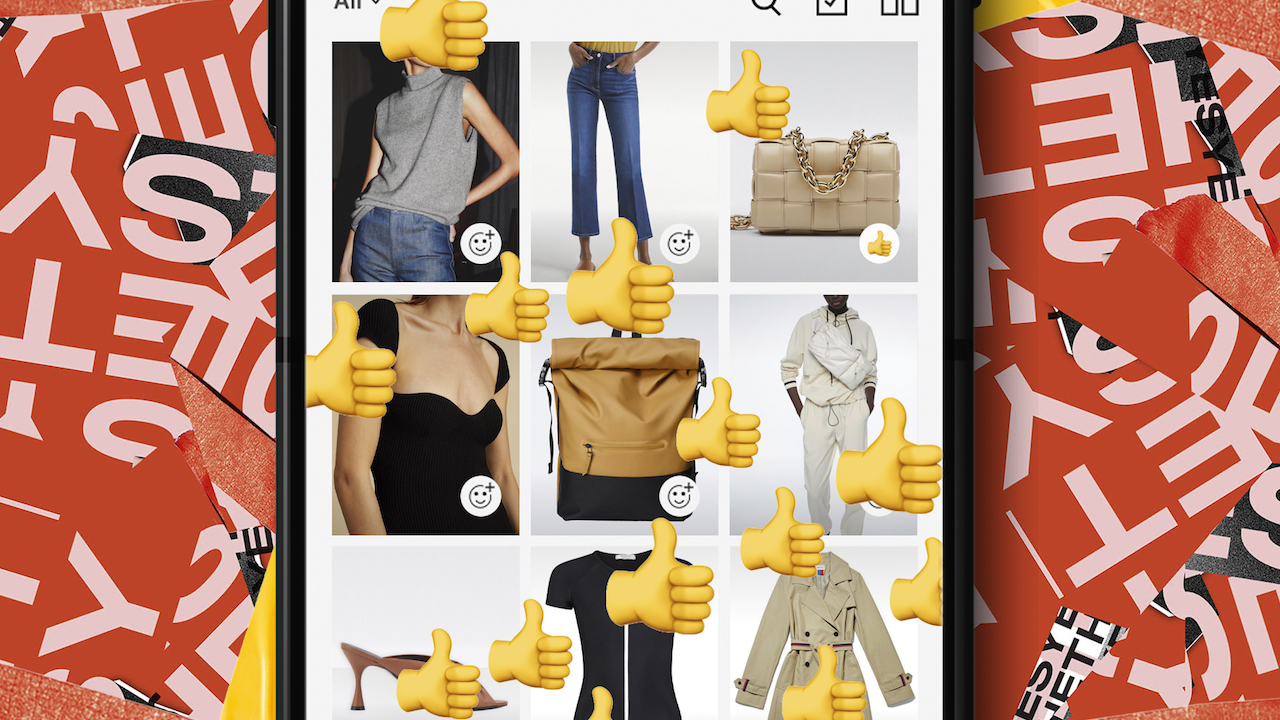Fashion Briefing: New acquisitions spotlight retailers’ ‘tastemaker’ ambitions
Recent acquisitions spotlight retailers’ ‘tastemaker’ ambitions
The aim to be a tastemaker among fashion shoppers is both driving new acquisitions and changing the retail landscape.
Luxury retailers — especially those online — are struggling to differentiate, as brands increasingly expand to more sales channels to meet customers where they are. At the same time, they’re realizing the limits of strategies like winning customers by outspending competitors on digital ads. Seeking stability, many have become more open to the ideas of mergers and acquisitions. And the fact that the offers they’re seeing are coming from fellow retailers and budding shopping destinations makes sense, considering fashion’s current tides.
With the value of high-spend shoppers at its most apparent, retailers are champing at the bit to become or remain their fashion source. But as the definition of luxury changes and market lines continue to blur, inking luxury brand partnerships is just one step to getting there. Today’s shoppers, at all levels, are discerning — and they’re more apt to be influenced by a TikToker than a store. So, along with offering luxury customers access to luxury products, retailers are focused on becoming curators, sources of inspiration and entertainment hubs. And they’re making strategic moves accordingly.
Since the start of June, plus-size e-tailer Dia & Co. acquired 11 Honoré, which has the same target consumer but focuses on luxury brands. And social platform Pinterest scooped up AI-powered fashion marketplace The Yes, which sells styles from Madewell to Margiela and Balenciaga. Just this week, German online retailer Zalando purchased Highsnobiety. Though best known as a streetwear publication, Highsnobiety has a growing retail business that’s been fueled by exclusive collections by the likes of Prada.
While luxury brands and retailers have been successful at expanding their offerings to reach mass consumers via diffusion lines, for example, leveling up, so to speak, is more challenging. That hasn’t stopped brands, however: Twenty-year-old Kendra Scott, which sells popular earring styles for $70, expanded to fine jewelry in 2013 and launched bridal rings late last month. And even notorious fast-fashion player Shein has attempted to elevate its offerings, though its newer line of silk, cashmere and linen basics is being sold under a new name, MOTF. Its dresses start at $25, versus Shein’s that start at $3.
“It’s hard to break out of what you’re known for,” Neda Whitney, head of marketing at Christie’s, said at Glossy’s Fashion & Luxury Summit last week. ”Collaboration is a great way to get there — to gain new followers and people who had not been interested in the brand before. But it’s harder to move up than down. Very few brands have done that successfully.”
Accessing luxury by association, versus collaboration, can also be effective. Also at the Summit, Lauren Amos, founder of Atlanta-based specialty stores Wish and Antidote, spoke about the difficulty of securing high-end brand partners as a new luxury retailer. “In the beginning, it was a lot of begging,” she said, of her approach. That the Atlanta luxury market is now booming has helped, she said, adding that Dior and Louis Vuitton do big business in the city. Just today, Neiman Marcus launched an elaborate Burberry takeover at its store in Atlanta’s Lenox Square — the exterior of the store is now wrapped in the Burberry logo. In a Zoom on Thursday, company president Lana Todorovich said the store drives the most volume for Burberry among Neiman Marcus locations.
As luxury brands prioritize direct sales and luxury arguably becomes even more exclusive — from a consumer standpoint, for sure — such campaigning by retailers will no doubt remain necessary. That even goes for the well-known luxury majors.
For Neiman Marcus, taking a customer-first approach has been effective: “Brands large and small see value in putting their brands in front of our discerning audience,” Todorovich said.
She added, “We have relationships [with our shoppers], and the way we activate this very desirable population is by always bringing them a bespoke [curation based on] discerning taste. It’s [the kind of] fashion where you walk in or log on and you get really delighted and engaged.”
On average, Neiman Marcus’s loyal customers are purchasing 46 times a year and browsing its site 112 times per year. Those customers spend $10,000 or more annually and make up 40% of Neiman’s total shopper base. Its new loyal customers — or those making a second purchase within 60 days of the first — have become younger since the start of the pandemic: Their average age has shifted from the mid-40s to the mid-30s. Sixty percent are now Gen Zers, millennials and Gen Xers.
Neiman Marcus’s business is decidedly stable, having grown its comparable sales in the quarter ending on April 30 by 30% year-over-year. Over the last year, it’s worked to strengthen its loyal customer base by building on several capabilities, many of which, coincidentally, are specialties of the luxury retailers that were recently acquired.
For one, Neiman Marcus has brought newness and exclusivity to its product assortment: Between fall 2021 and spring 2022, it brought on 200 new brands, including 40 in the contemporary department alone – 20 of those are exclusive to Neiman Marcus. It’s also brought new personalization to its shopping experience, based on luxury’s evolution from, “Let us tell you what’s important,” to, “‘We can help you discover what’s important for you,” Todorovich said. And, finally, it’s delivered more entertainment to its customers through a range of channels. With a new focus on “retailtainment,” it hosted 1,000 events in its stores in the last quarter. An activation at the NorthPark store in Dallas last summer drove seven figures in sales. And a recent video it made with Balmain drove 200 million impressions.
Pinterest has been actively going after shoppers, having recently expanded its commerce capabilities. In its press release announcing The Yes news, the word “taste,” in relation to Pinterest’s shopping goals with the acquisition, was used four times. When asked whether all brands sold at The Yes will now be available via Pinterest, Julie Bornstein, founder of The Yes and now Pinterest’s head of shopping and vision, told me, “The plan is to invite all brands to join our new shopping experience on Pinterest. We imagine it to be a great experience for them, but we are still working out the details of the transition.”
Meanwhile, “teaming up with Highsnobiety will accelerate Zalando’s ambition to be a top destination for streetwear, new luxury and fashion inspiration,” according to the deal’s press release. Currently, only Prada sunglasses are available on Zalando’s site.
Of course, Highsnobiety’s brand partners today may be different tomorrow. On that note, not all Sephora brands have joined the retailer in its shop-in-shops-based expansion to Kohl’s. Brands opting out of associations is a risk for retailers playing into the current industry consolidation and transformation. In 2019, when American Eagle launched a resale offering at its SoHo store following an investment in resale company Urban Necessities, streetwear leader Jeff Staple took issue with the fact that the retailer was featuring Yeezy and Nike logos in its store windows. That’s despite that the brands were, in fact, available to purchase in the store.
On the luxury front, it’s a safe bet that brands are questioning whether or not to sell via retailers catering to Gen Z by, for example, launching buy-now, pay-later services. After all, layaway and exclusivity don’t seem to mix. But recent moves by influential companies could certainly change luxury’s willingness to be more accessible. For example, this week, LVMH Ventures announced an investment in Lusix, offering the type of comparably affordable lab-grown diamonds that are still being snubbed by its umbrella companies Bulgari and Tiffany & Co. And, in January, it invested in Heat, which specializes in selling off-price designer duds.
It helps that many luxury companies that have dabbled in affordable prices are attesting that doing so did not, in fact, dilute their brand. During a Glossy Podcast interview, set to be released on Wednesday, designer Liz Lange said that her popular Target collaboration never had a negative impact on her namesake core business of high-end maternity wear. And at the Glossy Summit, Ring Concierge founder Nicole Wegman said launching $70 earrings to sell alongside $1 million rings has only benefited the company.
Of course, there will always be holdouts.
In Other News
LVMH North America teams with Harlem’s Fashion Row
On Wednesday, Harlem’s Fashion Row and LVMH North America announced a partnership centered on working together toward a more diverse, equitable and inclusive fashion industry. Included is an LVMH commitment to support HFR’s mission of discovering, mentoring and showcasing emerging talent of color through prominent industry events and programs.
“I aim for this partnership to yield inspiration for other luxury brands to follow suit and continue to act upon their DEI efforts,” Brandice Daniel, who founded HFR in 2007, told Glossy. “It is my hope that this partnership will implore the bounty of fashion houses to finally honor delayed commitments to change made in 2020 and lean in, just as LVMH has done.”
She added, “With the support and collaboration efforts of other merchants, designers of color can showcase their work to a global audience, giving them access. This is the missing piece for designers: access. I’m thrilled that HFR can play a part in that, and I’m excited about the future of fashion.”
Brand marketing via text gets interactive
On Tuesday, conversational commerce platform Attentive launched Attentive Concierge, answering consumer demand and enabling a more “VIP” shopping experience. According to a 2022 Attentive survey, 75% of consumers said they expect a direct response from a person when they interact with a brand. Through Concierge, customers can respond to brand messages with texted questions or recommendation requests, for example. In doing so, they’ll receive a response from a knowledgeable retail associate.
“I personally would not buy a $1,000 purse without having some sort of conversation with someone or requesting some sort of details on it,” Sara Varni, CMO of Attentive, told Glossy. “I see Concierge being a popular piece of a luxury goods marketer’s mix for the long term.”
Attentive’s current high-end clients include Kate Spade, Coach and YSL.
Commando hires for expansion
Commando founder Kerry O’Brien has been busy building out her company’s C suite. At the same time, with her hires all coming from the ready-to-wear world, she’s hinted that great category expansion is around the corner. Her latest, announced this month, was J.Crew alum Lori Wagner, as CMO.
Since 2020, O’Brien has also enlisted the company’s first chief technology officer – Gregory Morris, formerly of Alice + Olivia – and chief product officer – Lindsay Lyman-Clarke, who joined from Burton.
“This will be a pivotal year. And as [our shopper’s] demand for Commando increases, we are continuing to invest in our team across the organization,” O’Brien told Glossy.
Wagner noted that Commando is coming off “a record year,” and agreed that Commando is primed for category expansion. “Our commitment to innovation is core to who we are, and will continue to be a driving force in developing new categories and bringing in new consumers,” she said.
Inside our Coverage
Glossy Summit Recap: Leading fashion brands on innovating, engaging and safeguarding for the future
Farewell, Gilded Age: Silver is ‘coming to the forefront’
Donni’s Alyssa Wasko: ‘We built a business on one of the smallest product categories’




:quality(70):focal(1114x594:1124x604)/cloudfront-eu-central-1.images.arcpublishing.com/businessoffashion/MTADHY5ET5HTJDCRIFXGOR3SFQ.jpg)
